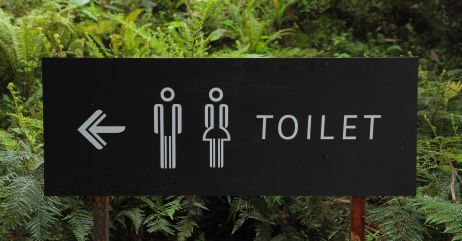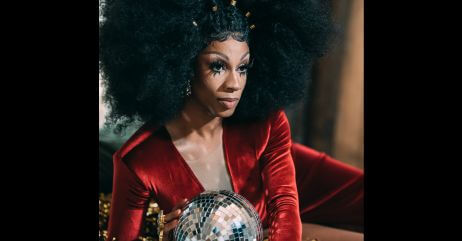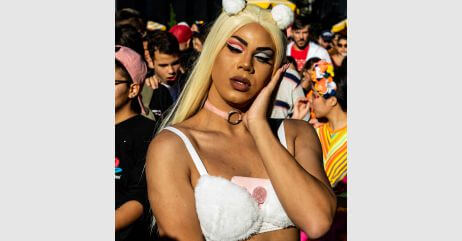Last updated on January 25th, 2024 at 08:33 am
Discover the origins of gender stereotypes and how they have affected society, including the historical, cultural, religious, educational, and social factors that shaped our perception of gender roles.
Gender stereotypes have seeped into every corner of society, defining how we view and interact with individuals based on their perceived gender.
But have you ever wondered where these deeply ingrained beliefs and expectations come from? In this blog post, we will embark on a journey to uncover the origins of gender stereotypes.
By understanding the historical, cultural, and societal factors that have shaped these constructs, we can begin to challenge their influence and work towards a more inclusive future.
In this article, we are going to lay bare the origins of gender stereotypes over the years and their impact so far on society.
Table of Contents
- Historical Context: Tracing the Origins Of Gender Stereotypes
- Cultural Influences on Gender Stereotypes: Socialization and Norms
- The Role of Family in the Origins of Gender Stereotypes
- The Role of Education in the Origins Of Gender Stereotypes
- The Role of Media and Popular Culture in the Origins Of Gender Stereotypes
- The Impact of Toys and Games on the Development of Gender Stereotypes
- Intersections with Power and Patriarchy
- The Role of Religion in the Development of Gender Stereotypes
- Conclusion
Historical Context: Tracing the Origins Of Gender Stereotypes

But where do these stereotypes come from? In order to understand the origins of gender stereotypes, we need to examine the historical context in which they emerged.
Gender stereotypes find their roots in centuries-old societal structures that assigned distinct roles to men and women.
Traditional gender roles were shaped by historical factors such as agricultural practices, division of labor, and notions of power.
In many societies, men were expected to be providers and protectors, while women were confined to domestic duties and child-rearing.
These historical norms laid the foundation for the perpetuation of gender stereotypes and the expectations associated with masculinity and femininity.
Gender Stereotypes in Ancient Cultures
In ancient cultures, gender roles were often determined by biological differences.
Women were seen as child-bearers, while men were the protectors and providers.
These roles were necessary for the survival of the tribe and were therefore deeply embedded in society.
But as societies became more complex, these roles became more rigid and limiting.
One of the earliest examples of gender stereotypes can be found in ancient Greek mythology.
The goddess Athena was seen as the embodiment of wisdom, but she was also depicted as masculine, with no mother or feminine qualities.
This dichotomy between intellect and femininity set a precedent for centuries to come, in which women were expected to be intellectually inferior to men.
Gender Stereotypes in the Middle Ages
In the Middle Ages, the patriarchal system was firmly in place. Women were expected to be obedient to men and fulfill their domestic duties.
Even the church reinforced gender stereotypes, preaching that women were to be subservient to men and that their role was to serve as wives and mothers.
The Industrial Revolution ushered in significant changes in gender roles.
As men began to work outside the home in factories, women were expected to take care of the children and the household.
This relegated women to a subordinate role and reinforced the notion that their primary role was to be caregivers.
Related: Balancing Biblical Gender Roles In Modern Society
Gender Stereotypes in the 20th Century
The 20th century saw significant progress towards gender equality, with women gaining the right to vote and entering the workforce in large numbers.
However, gender stereotypes persisted, with women being paid less than men and being underrepresented in leadership positions.
Today, gender stereotypes are still a significant issue.
They limit the freedoms and opportunities of both men and women and reinforce the idea that certain qualities and traits are exclusive to one gender or the other.
Tracing the roots of gender stereotypes allows us to understand how they came to be, and how we can challenge and change them.
By recognizing that these stereotypes are not natural or inherent, but rather socially constructed, we can work towards creating a more equitable and just society.
Only then can we live in a world where gender is no longer a barrier to achieving our full potential.
Related: The Red Flags: 12 Big Signs Of Toxic Masculinity
Cultural Influences on Gender Stereotypes: Socialization and Norms

As we have known already, gender stereotypes are a pervasive force in society, influencing our beliefs about the roles and behaviors of men and women.
They are shaped by cultural influences, including socialization and norms.
Socialization refers to the process through which individuals learn the norms, values, and practices of their society, while norms are the unwritten rules that guide our behavior.
Cultural influences affect not only how we view gender, but also how we interact with others.
They determine what we think is appropriate behavior for men and women, and what is not.
For instance, men are expected to be strong, aggressive, and dominant, while women are supposed to be nurturing, submissive, and emotional.
Also Read: Exploring the Interplay of People and Society
The Role of Family in the Origins of Gender Stereotypes

The family as the nucleus of the society and its role in the origins of gender stereotypes is significant.
Families serve as the primary socializing agents, shaping children’s perceptions of gender roles from an early age.
Parents, siblings, and extended family members often reinforce traditional gender norms through their words, actions, and expectations.
Parents may unknowingly perpetuate stereotypes by assigning different chores or responsibilities based on their child’s gender.
For example, girls may be encouraged to help with cooking and cleaning, while boys are encouraged to engage in more active or technical tasks.
Related: How to Reconcile Femininity and Feminism
Additionally, parents may inadvertently reinforce gendered behaviors by praising or criticizing certain behaviors based on societal expectations.
Siblings and extended family members also contribute to the formation of gender stereotypes by reinforcing gender-specific interests and activities.
Brothers and sisters may be encouraged to engage in different types of play or pursue distinct hobbies, reinforcing the idea that certain activities are “appropriate” for one gender but not the other.
While family plays a crucial role in the development of gender stereotypes, it is essential to recognize that change can also start within the family.
By fostering an environment that challenges gender norms, encourages open dialogue, and provides equal opportunities and support for all family members, families can play a pivotal role in breaking free from the constraints of gender stereotypes.
Related: The Impact Of Gender Stereotypes On Individuals
The Role of Education in the Origins Of Gender Stereotypes
While many factors contribute to the origin of these stereotypes, education has been identified as one of the culprits.
Education is an essential tool for shaping the minds of young individuals, but it can also be a breeding ground for gender stereotypes.
This phenomenon is why we see a disproportionate number of men in STEM careers and women in caregiving roles.
The root cause of this problem is the way our education system traditionally focuses on reinforcing gender norms, rather than challenging them.
From the moment a child steps into a classroom, they are subjected to stereotyping.
Boys are encouraged to explore the outdoors, play sports, and be competitive; while girls are taught to be nurturing, quiet, and follow the rules.
These stereotypes continue to be reinforced in textbooks, test materials, and even the way teachers treat students.
Children begin to internalize these messages, and it shapes their identity and beliefs about their gender.
Related: The Power In Female And Male Submission
The Role of Media and Popular Culture in the Origins Of Gender Stereotypes

These stereotypes are not just limited to our personal beliefs and attitudes, but they are also perpetuated by media and popular culture.
Media and popular culture have a significant impact on the way we view gender roles and how we treat each other based on our gender.
In the beginning, gender roles were primarily based on biological differences, and men were seen as physically and intellectually superior to women.
Over time, this notion evolved into the belief that women should be responsible for all domestic tasks, while men took on the role of the breadwinner.
These gender roles were transcribed into literature, plays, and other forms of media, making them an integral part of our culture.
Related: Embracing Femininity To Feel Confident And Beautiful
This portrayal of women has led to the sexualization of females from an early age and has perpetuated the patriarchal notion that women should be attractive and sexually available to men.
The media also encourages the formation of gender-based groups by portraying women as inferior and in need of male protection.
The notion of ‘damsel in distress’ is so embedded in our culture that it is challenging to disassociate women from this image.
Similarly, men are encouraged not to display vulnerability or emotions, promoting toxic masculinity, and the notion that men should be tough and inherently aggressive.
It is only through awareness and education that we can eradicate gender stereotypes and promote equality for all.
Related: Understanding your Individuality
The Impact of Toys and Games on the Development of Gender Stereotypes

Toys and games play a significant role in the development of gender stereotypes.
From a young age, children are exposed to toy and game preferences based on their gender, which can reinforce societal expectations and stereotypes.
For instance, girls are typically given dolls, play kitchen sets, and makeup toys, while boys are more often given construction sets, cars, and video games.
Such disparity in toy choices can teach children that certain activities are only meant for specific genders, indirectly promoting gender roles, stereotypes, and limitations.
Related: Understanding Gender Roles and Expectations in Society
Girls are, therefore, more likely to be perceived as nurturing, emotional, and passive, whereas boys are perceived as aggressive and competitive, which can influence socialization, career goals, and relationships.
Consequently, the impact of toys and games on the development of gender stereotypes is significant and long-lasting as it can affect and shape the identity, self-concept, and socialization of children throughout their lives.
It is, thus, crucial to promote intergender toy sharing and other future opportunities that support gender equity.
Intersections with Power and Patriarchy
Gender stereotypes are closely intertwined with power dynamics and patriarchal systems.
Historically, men have held positions of power and authority, creating structures that perpetuate gender inequalities.
These power imbalances reinforce and maintain gender stereotypes, as they serve the interests of those in power.
Patriarchal norms dictate that men should be dominant and assertive, while women should be submissive and obedient.
The intersectionality of gender with other social identities, such as race, class, and sexuality, further complicates the effects of gender stereotypes, as they can compound and intersect with other forms of discrimination and oppression.
The Role of Religion in the Development of Gender Stereotypes
Religion has played a significant role in the development and origins of gender stereotypes by providing specific teachings and beliefs about the roles and behaviors of men and women.
Many religions have traditional gender roles, where men are expected to provide for their families and be the head of the household, while women are expected to take care of the home and children.
These beliefs have contributed to the development of gender stereotypes that associate men with power, strength, and independence, while women are associated with nurturing, caring, and submission.
Related: Femininity And Sexuality: Navigating Society’s Expectations
Religious texts, such as the Bible or Quran, have been used to justify these gender stereotypes.
For example, verses in the Bible reinforce the idea that women should submit to men and be subservient, while men should be the leaders.
These teachings have been used to perpetuate the idea that women should not take on leadership roles or pursue careers outside of the home.
Furthermore, religious practices and traditions often reinforce gender stereotypes.
For example, many religions have specific dress codes for men and women that reinforce gender norms, such as men wearing suits and ties and women wearing skirts or dresses.
These practices reinforce the idea that there are specific roles and behaviors that are appropriate for each gender.
Related: Reconciling Feminism And Biblical Gender Roles
Conclusion
Gender stereotypes have been deeply embedded in our society for centuries.
The origins of gender stereotypes can be traced back to historical and cultural factors, such as the influence of traditional gender roles, the power dynamics between men and women, and various media outlets.
These stereotypes create harmful and unfair expectations for individuals based on their gender, limiting their potential and perpetuating inequality.
Although progress has been made in challenging and breaking down these stereotypes, it is important to continue this work through education, advocacy, and addressing the root causes of these biases.
Only then can we create a society where individuals are valued for their unique qualities and abilities, rather than their gender.
Frequently Asked Questions
What are gender stereotypes?
Gender stereotypes are widely held beliefs and assumptions about the characteristics, attributes, and behaviors that are expected of individuals based on their sex or gender.
How are gender stereotypes formed?
Gender stereotypes are formed through a combination of factors including socialization, cultural norms and values, family and peer influences, media representations, and institutional practices.
How do gender stereotypes impact individuals and society?
Gender stereotypes can limit individuals’ potential, restrict their choices and opportunities, reduce their self-esteem, and contribute to gender inequalities. These stereotypes can also perpetuate biased attitudes and discriminatory practices, leading to social injustice and perpetuating gender-based violence.
What can be done to challenge and change gender stereotypes?
Various actions can be taken to challenge and change gender stereotypes such as increased awareness and education about gender stereotypes, promoting gender equality through social and cultural practices, promoting equitable policies and institutional practices, and promoting positive media representations of gender roles and behaviors.
How can parents and caregivers help in combating gender stereotypes?
Parents and caregivers can help combat gender stereotypes by being aware of and challenging their own biases, modeling equitable behavior, exposing children to diverse gender roles and behaviors, encouraging open discussion about gender, and using inclusive and non-judgmental language. They can also support gender equity initiatives in schools and communities.
References:
- The origins of our gender roles
- Stereotypes and Gender Roles – Culture and Psychology
- The History Of Gender Stereotyping
- Evolution of Gender Stereotypes in Spain
- Gender stereotypes across the ages
Pyo Merez (PsyD) is a distinguished adolescent and adult psychologist at the forefront of mental health advocacy.
With expertise in cognitive and developmental psychology, focusing on social relationships, cultural contexts, and individual differences, Pyo has dedicated his career to empowering adolescents and adults.
As a sought-after speaker and panelist, Pyo shares invaluable insights on issues affecting young people, contributing to a deeper understanding of mental health and well-being in today's society.




